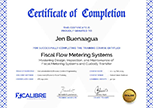| Date | Venue | Fee | |
|---|---|---|---|
| 24 Nov - 28 Nov 2025 | Dubai – UAE | $ 4,950 | Register Now |
| 19 Jan - 23 Jan 2026 | Lisbon - Portugal | $ 5,950 | Register Now |
| 13 Apr - 17 Apr 2026 | Dubai – UAE | $ 5,950 | Register Now |
| 27 Jul - 31 Jul 2026 | Dubai – UAE | $ 5,950 | Register Now |
| 21 Sep - 25 Sep 2026 | London - UK | $ 5,950 | Register Now |
| 23 Nov - 27 Nov 2026 | Dubai – UAE | $ 5,950 | Register Now |
About the Course
This 5-day Annual Report Writing training course is not just about learning the mechanical aspects of putting together a document; it delves into what makes an annual report effective, compelling, and compliant with regulatory standards. It commences with foundational insights into the purpose and structure of annual reports, mapping out the landscape of regulatory requirements from frameworks such as Sarbanes-Oxley and Dodd-Frank. It then navigates through the key sections, from the executive summary to financial statements, elaborating on the significance and best practices for each.
What sets this programme apart is its emphasis on advanced techniques of reporting presentation, including hands-on experience with Power BI Visualisation. An in-depth look at technical aspects like XBRL taxonomies and a comparative analysis of IFRS and US GAAP standards complements this.
It adopts an analytical approach by teaching delegates to discern key financial ratios and red flags, equipping them with the skills to make informed decisions or recommendations. The programme culminates with case studies and practical exercises, allowing delegates to apply their acquired knowledge in real-world scenarios. Whether they are a financial analyst, a corporate communication specialist, or an executive responsible for corporate governance, it offers delegates the tools and knowledge to master the multifaceted discipline of annual report writing.
Core Objectives
The delegates will achieve the following objectives:
- Know the advanced techniques and practical application of reporting presentation and Power BI Visualisation
- Understand the purpose and structure of an annual report
- Identify key sections and components of an annual report and their significance
- Develop efficient reading techniques to extract relevant information quickly
- Analyse financial statements, including the balance sheet, income, and cash flow statement
- Interpret key financial ratios and performance indicators
- Recognise potential red flags and areas of concern in an annual report
- Understanding the purpose and importance of annual reports
- Overview of the components and structure of an annual report
- Key regulatory requirements and guidelines for annual reporting
- Case studies and examples of effective annual reports
Training Approach
This training course adopts a blended learning approach, suitable for both classroom and virtual environments, to ensure a comprehensive and interactive experience. Grounded in adult learning principles, it integrates lecture-based instruction with hands-on activities, encouraging active participation and real-world application of concepts. A cornerstone of our methodological approach involves using Power BI for practical exercises, enabling delegates to grasp advanced reporting techniques effectively.
The Attendees
This training course is designed to benefit professionals involved in creating, analysing, or overseeing corporate annual reports. It is ideally suited for those seeking to deepen their understanding of the qualitative and quantitative aspects of annual reporting. The multifaceted approach of the programme makes it relevant for a broad spectrum of job roles.
Likewise, it will be valuable to the professionals but not limited to the following:
- Financial Analysts
- Corporate Communication Specialists
- Compliance Officers
- HR Managers and Professionals
- Project Managers
- Corporate Governance Experts
- Internal Auditors
- Management Consultants
- Corporate Strategy Planners
- Business Journalists
- CFOs and Finance Managers
- Investor Relations Officers
Daily Discussion
DAY ONE: INTRODUCTION AND FUNDAMENTALS OF ANNUAL REPORTS
- Purpose and Importance of Annual Reports
- Definition and Historical Context
- Stakeholder Communication and Corporate Accountability
- Relevance in Current Market Conditions
- Regulatory Landscape
- Overview of Regulatory Bodies
- Compliance Frameworks: Sarbanes-Oxley, Dodd-Frank
- Penalties for Non-compliance
- Structure of an Annual Report
- Basic Format: Executive Summary to Financial Statements
- Comparative Analyses of IFRS/US GAAP Structures
- Importance of each Section in Conveying Corporate Information
DAY TWO: IN-DEPTH INTO KEY SECTIONS AND FINANCIAL STATEMENTS
- Executive Summary
- Role and Significance
- Structure and Content Focus
- Best Practices in Writing the Executive Summary
- Financial Statements
- Balance Sheet: Assets, Liabilities, and Equity
- Income Statement: Revenue, Expenses, and Profit
- Cash Flow Statement: Operating, Investing, and Financing Activities
- Chairman’s Statement and Management Discussion
- Structure and Key Components
- Importance in Investor Relations
- Crafting a Compelling Narrative
- Corporate Governance Report
- Elements: Board Structure, Committees, and Policies
- Significance in Risk Management
- Best Practices in Corporate Governance
DAY THREE: ADVANCED REPORTING TECHNIQUES AND TECHNICAL ASPECTS
- Power BI Visualisation
- Introduction to Power BI
- Data Sourcing and Manipulation
- Creating Interactive Dashboards and Visual Reports
- Technical Reporting Aspects
- Introduction to XBRL Taxonomies
- Comparative Analyses of IFRS/US GAAP in XBRL
- Practical Examples and Use-cases
- Reporting Presentation
- Using Multimedia Elements Effectively
- Design Principles for Better Engagement
- Storytelling Techniques in Reporting
DAY FOUR: FINANCIAL ANALYSIS AND RED FLAGS
- Efficient Reading Techniques
- Scanning for Key Points
- Skimming for General Understanding
- Deep reading for Comprehension and Analysis
- Financial Statement Analysis
- Liquidity Ratios: Current Ratio, Quick Ratio
- Profitability Ratios: Net Margin, Return on Assets
- Leverage Ratios: Debt-to-Equity, Interest Coverage
- Recognising Red Flags and Areas of Concern
- Unusual Fluctuations in Financial Ratios
- Excessive Short-term Debt
- Inconsistencies in Reported Numbers
DAY FIVE: CASE STUDIES, PRACTICAL APPLICATIONS, AND CONCLUSION
- Case Studies
- Analysis of Effective Annual Reports
- Dissection of Ineffective Annual Reports
- Comparative Analysis and Discussion
- Practical Exercise
- Participants Analyse a Sample Annual Report
- Peer review and Group Discussion
- Feedback and Actionable Insights
- Conclusion and Additional Resources
- Summary of Key Learning Points
Certificate Awarded
Upon successful completion of this training course, participants will be awarded a Certificate of Completion from XCalibre Training Centre, acknowledging their accomplishment. This certificate serves as a testament to their dedication to developing their skills and advancing their expertise in their respective fields.


